Amphibian that never floats. AAAV / EFV program
In the eighties of the last century, the command of the American Marine Corps (ILC) began to seriously consider the ideas of the so-called. over-horizon landing. According to this concept, the navy was to be unloaded from ships at a great distance from the coast, including beyond the horizon line. With this method of landing amphibious ships almost no risk of falling under the fire of the coastal defense of the enemy or stumble upon minefields. However, over the horizon landing requires the use of floating armored vehicles, which not only can float, but also move with relatively high agitation. The amphibious AAV7 armored vehicles available to the marines were generally suitable for such tasks, but still had insufficient seaworthiness, and the maximum speed on the water of the order of 12-13 km / h was insufficient.
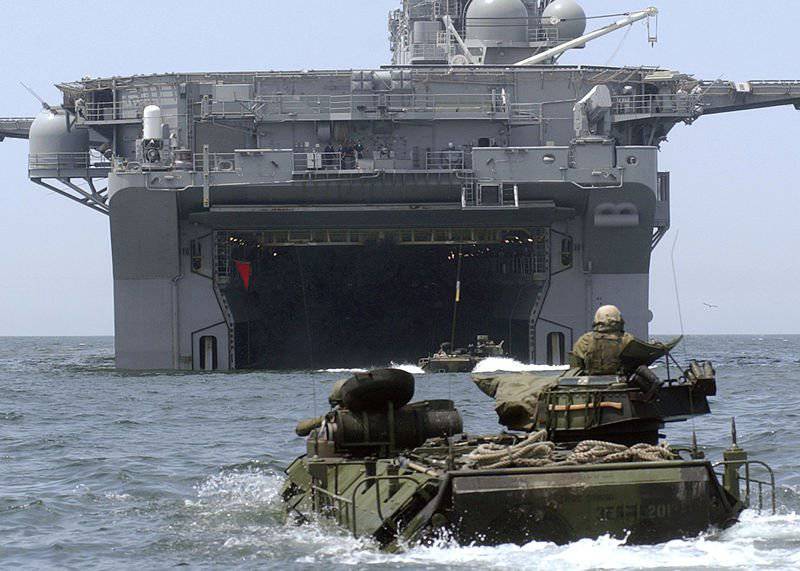
From the company General Dynamics demanded to make a new armored vehicle, devoid of existing flaws and having higher performance. The project received the AAAV cipher (Advanced Amphibious Assault Vehicle - "Improved amphibious assault vehicle"). The main objective of the project was to ensure high performance on the water, especially the speed and range of navigation. It was originally planned that the first AAAV combat vehicles would go to the ILC part already in the mid-nineties, and full-scale mass production would unfold by the end of the same decade, but further events forced a serious revision of the deadlines. Due to a number of problems in the development of the project had to change the requirements and, starting from the late eighties, in fact, to develop an armored vehicle again. Only in the mid-nineties was the first prototype of the AAAV assembled. Later, in 2003, the program was renamed EFV (Expeditionary Fighting Vehicle), it was under this designation that it became very famous.
Requirements for the characteristics of the stroke on the water left their mark on the appearance of AAAV / EFV. The machine was originally developed floating, had a body of the appropriate form and a jet of propulsion in the rear part. However, as studies have shown, meeting the requirements for high-speed movement on the water using old practices was simply impossible. For this reason, it was necessary to conduct separate surveys for the optimal shape of the hull. As a result, a welded structure of aluminum plates with a corrosion-resistant coating, which had characteristic lines, was chosen. Thus, the lower frontal part of the EFV case has a relatively large size and serves as a support for an additional folding shield. The bottom of the machine "consists" of two parts: in its middle part there is a ledge, which provides the possibility of gliding at high speed. In addition to the “gliding” bottom, the EFV is equipped with two special shields that improve interaction with the surface of the water. The first of them is assembled from two parts located at an angle to each other and mounted in the bow of the armored vehicle. When entering the water, it sinks forward and performs the same functions as the bow of the swimming vehicle. The second shield of smaller area when moving on the ground is located above the rear part of the roof, and when entering the water it descends under the bottom. There, this flap works like a hydrofoil.
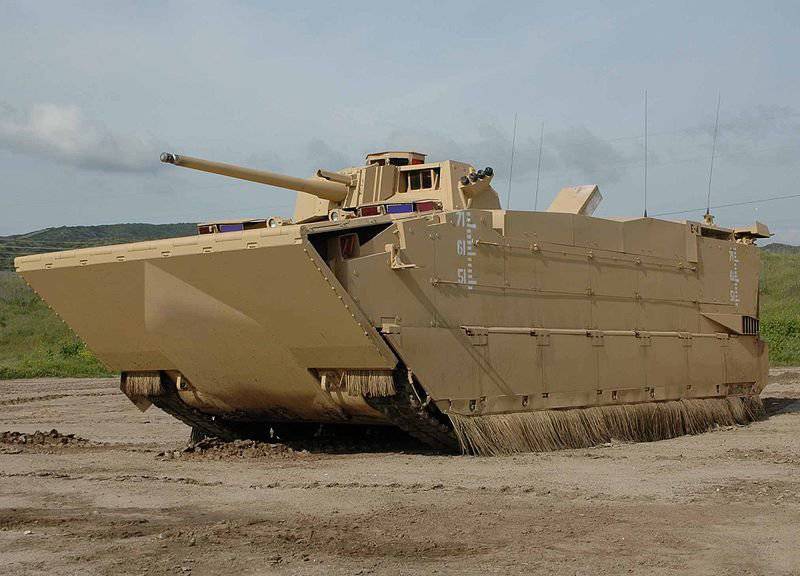
A new approach to the amphibiousness of the combat vehicle made the project authors apply a radically new engine. Together with MTU Friedrichshafen, the MT 883 Ka-524 dual-mode diesel engine was developed. When driving on the ground, it develops power to 850 horsepower. When switching to water, the second mode is turned on, in which the engine produces up to 2700 hp. In this case, in the water mode, the engine can only deliver power to water jets. In addition, high power requires sufficient seawater to cool the engine. The radiators are located at the rear of the hull, the engine is in the middle, under the floor of the combat and airborne units. Such an arrangement of the engine led to a rather high height of the machine as a whole. When entering and leaving the water, the engine power through the dispensing mechanism can be distributed between the tracks and water cannons at the same time, however, for obvious reasons, in this case, the engine operates in the "ground" mode. Of particular interest is the chassis EFV. Independent hydropneumatic suspension of seven support rollers on board after entering the water can lift them to the highest position. In addition, the tracks are tensioned. In the tensioned state, the links of the latter form a single surface with the bottom, which also reduces water resistance during gliding. In addition, the side of the caterpillar is covered with additional lifting shields. In the middle part of the bottom of the EFV are located the intake windows of the jet propulsion units. Water is discharged through nozzles at the stern. At the same time, the transmission of water cannons allows you to change the thrust of the propellers one by one or both at once. Due to the last opportunity is taxiing on the water.
Road performance amphibians EFV on land do not constitute something special. The 34,5 tonnage vehicle accelerates to 72 km / h on the highway. But on the water amphibian beats all records of armored vehicles. During the test voyages, the EFV was able to reach the mark of 46 km / h, which is several times greater than the maximum speed on the water of other armored vehicles. With a power reserve, the same picture is observed: by land, the EFV runs up to 520 kilometers on one refueling with diesel fuel, and up to 120 kilometers by water. Like the previous amphibious Marine Corps AAV7, EFV has a fairly large size. The maximum length of the machine with the panels folded back is 10,67 meters, the width is 3,66 meters, and the height on the roof of the tower is 3,3 meters. Due to its large size, the new amphibian has a large-capacity amphibious unit. In addition to the three-man crew in the EFV can go up to seventeen fighters with their equipment. The landing and landing of the assault force is carried out through a lowered ramp in the rear hull sheet. The crew, in turn, has its own hatches in the roofs of the hull and tower.
Armament machine EFV consists of an automatic cannon and machine guns. In the double rotary turret Mk.46 is 30-mm gun Mk.44 Bushmaster II. 7,62-mm machine gun M240 is paired with a gun. In addition, depending on the wishes of the customer, another machine gun can be mounted on the open turret. Tower ammunition weapons may contain up to 600 shells and 2400 cartridges.
Booking of the hull provides all-round protection against armor-piercing bullets of 14,5 caliber of millimeters and fragments of shells of caliber up to 152 mm. It is also alleged that the frontal protection of the EFV can withstand a hit of 30-mm armor-piercing sabots. The creators of the project emphasize the fact that these protection indicators relate only to the armored body itself. An additional protection of the machine is provided by the front water-breaker shield and side lowered shields. In addition, the EFV has fastenings for additional mounted booking modules. How much the characteristics of the machine when installing additional armor, not reported. Probably, several tons of attached metal and ceramics take away from the amphibian a couple of kilometers of maximum speed on the water.
It was created two main modifications of the EFV combat vehicle. This is the landing EFVP1, described above and is the base model, and EFVC1. The latter is a command-staff version and has a number of differences from the basic version. In the troop compartment of the KSHM, seven workplaces equipped with communications equipment and computer complexes were installed. The native cannon tower Mk.46 is not installed in this variant, instead the command and command vehicle carries a light turret with one machine gun.
The development and testing of the EFV was accompanied by a host of unpleasant incidents of both technical and economic or political nature. For a long time it was not possible to accelerate the car on the water to maximum speed, and the dual-mode engine required serious refinement. In this regard, in the mid-2000s, the leadership of the US Marine Corps began to doubt the prospects of the current version of the project. New technological and operational changes followed, which, however, did not have the desired effect. The car became a little more reliable, but the pilot operation of the prototypes in parts of the ILC still did not allow the EFV to be adopted. The breakdown in one breakdown on 4-5 operating hours was considered too large and demanded that General Dynamics increase the reliability of the mechanisms. Meanwhile, the leadership of the Pentagon also remained in doubt. In the spring of 2009, the US Secretary of Defense R. Gates proposed to continue the creation of a new combat vehicle without major revisions and changes in requirements. A little more than a year later, Gates seemed to have decided on his attitude to the program and proposed to roll it up. Ironically, his statements “missed each other” for just a few hours with the solemn ceremony of handing over the next prototype for trial operation.
At the beginning of the design of the amphibian EFV Marine Corps planned to purchase at least a thousand of these machines. However, subsequent events, the prolonged development and increase in the cost of the program, coupled with technical problems, led to a reduction in plans by almost twenty times. Against the background of a decrease in defense spending, the growth in the cost of an individual car turned out to be too large - the ILC was not ready to give about $ 25 million for one amphibian. At the same time, the very concept of using EFV machines was criticized. As a counterargument against this project, a high degree of development of coastal defense facilities was cited. The long range of amphibians on water, according to initial ideas, should allow landing ships to stay at a considerable distance from the coast. However, existing anti-ship missiles are capable of hitting targets at ranges greater than the EFV range. As for the armored amphibians themselves, they can be destroyed by sea or land mines, as well as artillery fire. Thus, for reliable landing of amphibious assaults using EFV machines, preliminary “cleansing” of the coast and coastal waters by ship artillery or aviation. However, in this case, the fighting qualities of amphibious landing amphibians may prove to be useless, since there will be no one to fight with. Another argument against the EFV program was its cost. Initial plans included $ 16 billion in costs. It was planned to spend these funds on research and design work, as well as on the construction of thousands of machines. However, as of the end of 2010, the cost of the program, which was also still quite far from mass production, already amounted to more than three billion. Because of this, the entire second half of 2010, Pentagon analysts studied the progress of the program and its prospects. As a result, they calculated that the mass production of EFV will be able to begin no earlier than 2015, of course, while maintaining current funding.
When the AAAV project was just beginning, the command of the Marine Corps wanted to receive production vehicles by the end of the nineties. However, the events that followed have shifted the planned start of supply by a decade and a half. Probably, this fact was the last straw, or at least one of the last. As a result, at the very beginning of 2011, the head of the Pentagon, R. Gates, announced that the EFV program will be completed in the near future. After analyzing the current state and progress of previous work, the leadership of the US military decided to abandon the amphibious vehicle for the sake of reducing the cost of projects with a dubious future. A few months after Gates’s statements, the EFV project was finally discontinued. Despite the decision of the Ministry of Defense, the Marine Corps did not give up the desire to get a new amphibious vehicle to replace the old AAV7. However, this time the technical requirements - it was emphasized - will be much more gentle and simple. By the end of the current 2012, the marines must determine their desires and issue demands for a new combat vehicle.
On the materials of the sites:
http://marines.mil/
http://globalsecurity.org/
http://army-technology.com/
http://armyrecognition.com/
http://defensenews.com/
http://armytimes.com/
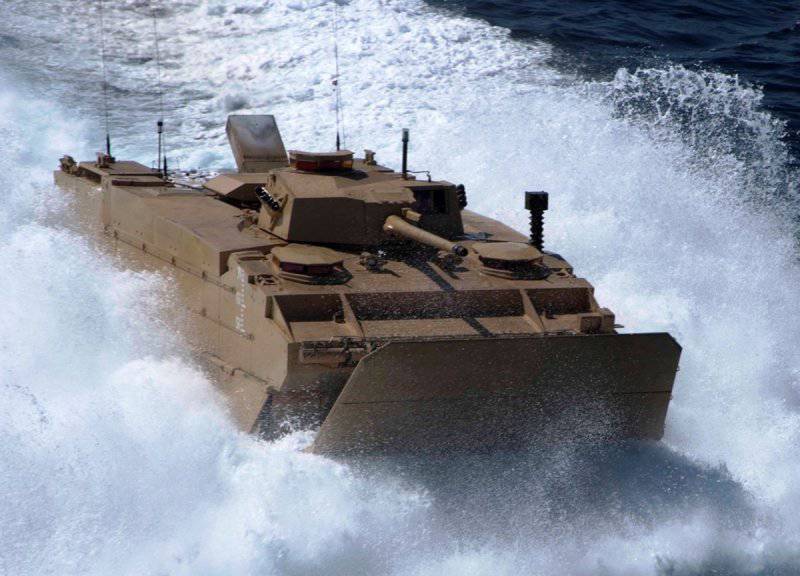
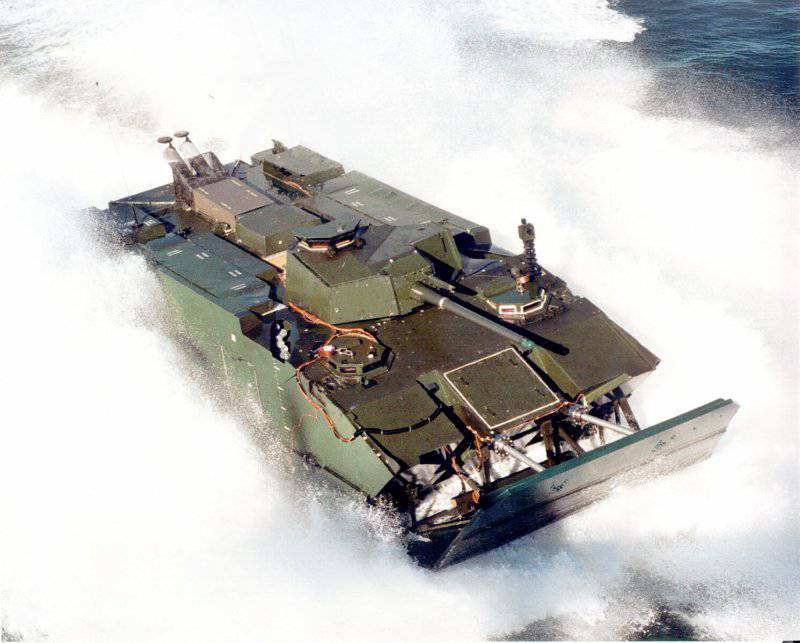
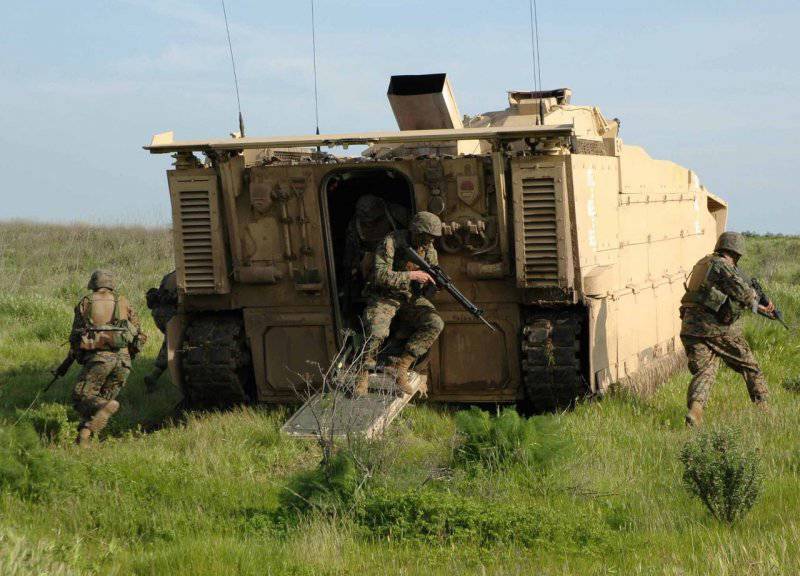
Information